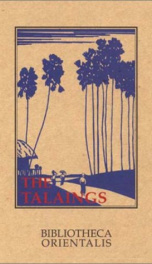the talaings

Robert Halliday is by most scholars acknowedged as 'the father of Mon studies'. A missionary with the American Baptist Mission, he lived among the Mon in the first three decades of the twentieth century in Burma and Siam, and wrote extensively about this distinguished race through which Theravada Buddhism was imparted to the immigrant Burmans and Siamese. The publication of Halliday's major work on the Mon, The Talaings, was apparently delayed by the First World War, and appeared in 1917 with the Government Press in Rangoon. In retrospect it is unfortunate that the title of his work was given the somewhat prejorative Burmese word for the Mon. As Halliday himself remarks, 'In Talaing books and in ordinary Talaing speech, the name Mon only is used.' The term Talaing only had currency in Burma; among the Siamese and others, Western linguists included, the word Mon is generally used. In his book Halliday based his observations from his stay in around Ye in southern Burma, but interpolated his detailed knowledge of Mon communities in Siam, and was careful to distinguish variant practices in the different countries. One has the impression that even in the second decade of the twentieth century, the Mon of Burma were well on the way to assimilation. Subsequent research in Thailand in the 1970's showed a similar trend. At last his work, categorized with understatement as 'not readily accessible' by Foster in 1973, has become available.
Info about the book
Author:
Series:
Unknown
ISBN:
1112596127
Rating:
3.5/5 (2)Your rating:
0/5
Languge:
English
Users who have this book
Users who want this book
What readers are saying
What do you think? Write your own comment on this book!
write a commentif you like the talaings try:
Other books by this author
Do you want to read a book that interests you? It’s EASY!
Create an account and send a request for reading to other users on the Webpage of the book!

